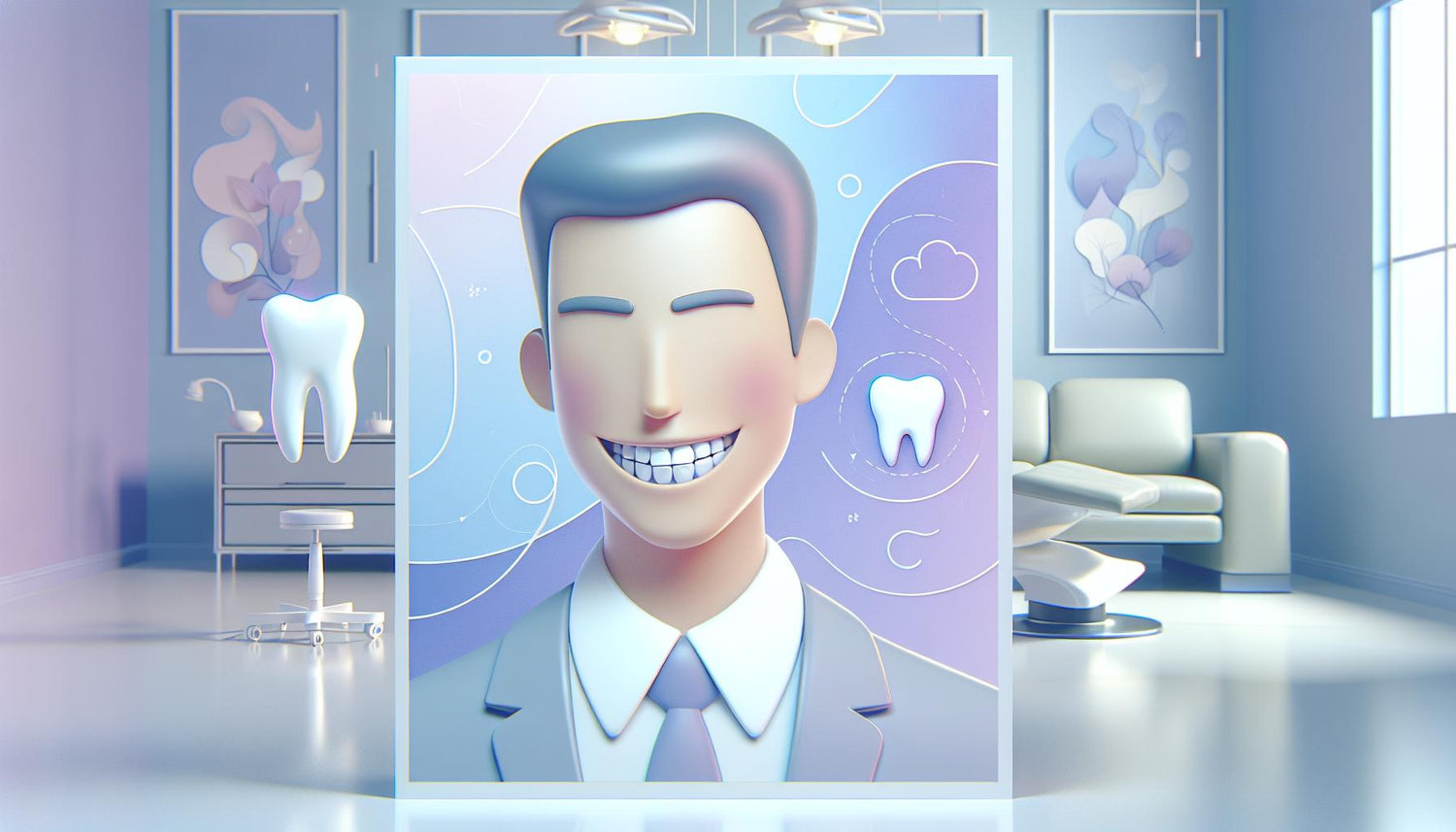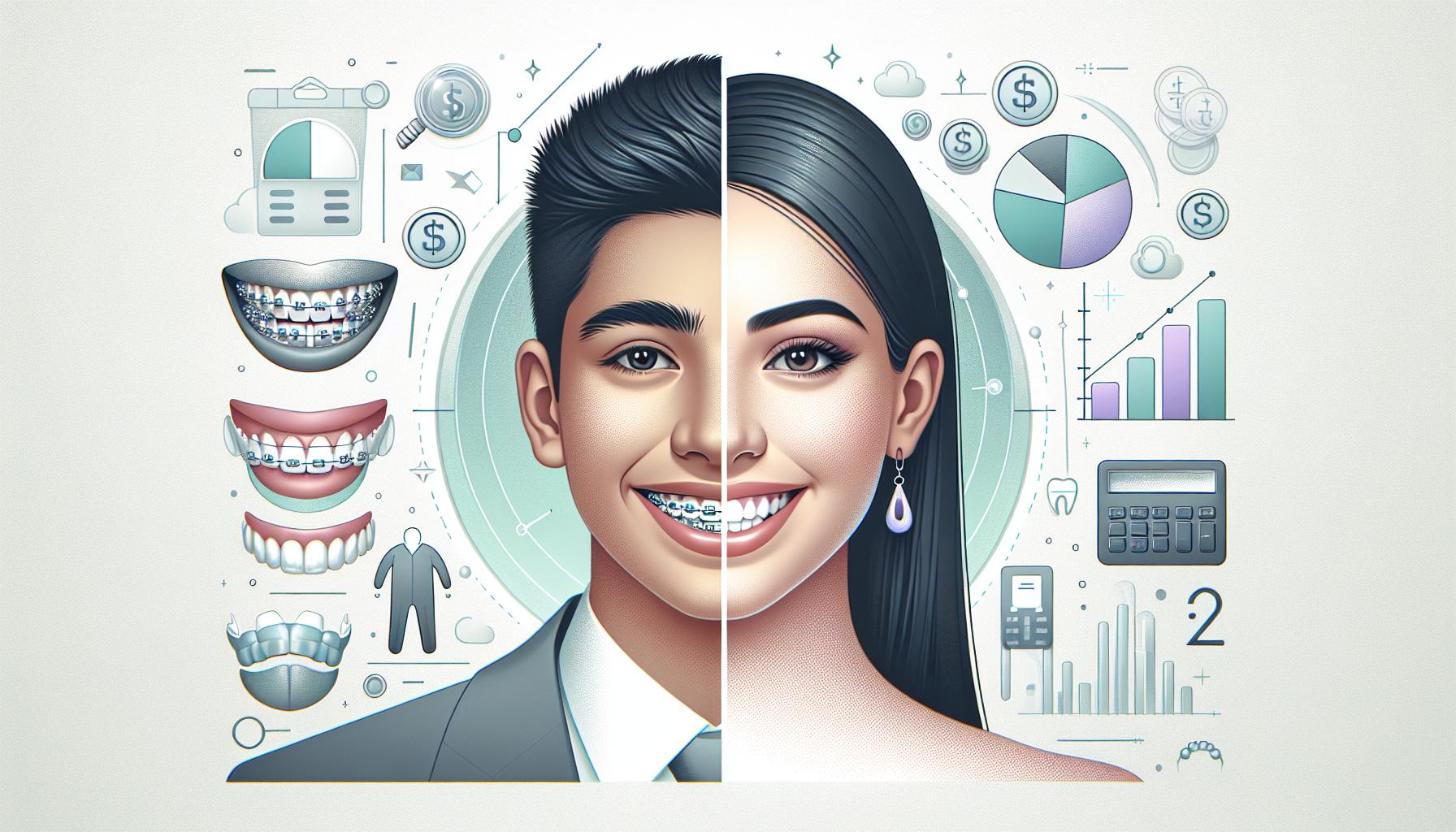Invisalign clear aligners have transformed the way we approach orthodontic treatment, offering a discreet and effective method for achieving a straighter smile. However, as with any treatment method, patients often experience some discomfort, especially during the initial adjustment period or when switching to a new set of aligners. In this comprehensive guide, we’ll address common questions and concerns—such as "should Invisalign be tight?" and "should Invisalign hurt?"—and provide actionable tips to ease your discomfort while ensuring your treatment stays on track.
Introduction to Invisalign Discomfort
Invisalign aligners are custom-made to fit snugly over your teeth, gradually guiding them into their desired positions. It is natural to experience some tightness or soreness when you first start wearing your aligners or when switching to a new set. Despite these initial challenges, most patients find that the discomfort subsides as their teeth adjust to the pressure involved in the treatment.
In this guide, we’ll cover:
- What kind of discomfort you can expect during Invisalign treatment
- Responses to common questions surrounding aligner tightness and pain
- Practical tips to minimize discomfort while enhancing the effectiveness of your treatment
- When to contact your orthodontist if discomfort persists
Whether you’re wondering, "should Invisalign hurt?" or "should Invisalign hurt when taking out?" you’re in the right place for clear answers and helpful advice.
Understanding the Nature of Invisalign Discomfort
How Invisalign Aligners Work
Invisalign treatment works through a series of aligners designed to gradually move your teeth. Each set of aligners applies gentle pressure to specific areas of your dental structure, inducing small movements that cumulatively result in significant changes over time. Because of this method, experiencing slight discomfort or soreness—especially after switching to a new set—is common and should be expected during the early stages of treatment.
Types of Discomfort You May Encounter
-
Tightness:
Many patients ask, "should Invisalign be tight?" The answer is yes—a proper aligner should feel snug. This tight fit is essential for applying the required pressure to shift your teeth. While the sensation might feel unusual initially, it is an integral part of the treatment process.
-
General Soreness:
It’s also natural to wonder, "should Invisalign hurt?" While the aligners should not cause severe pain, you might experience temporary soreness similar to what is often described with traditional braces. This soreness is typically most noticeable when you first put in a new aligner and should lessen with time.
-
Discomfort During Removal:
Another common concern is, "should Invisalign hurt when taking out?" Removing your aligners may cause a brief, mild discomfort or a slight resistance due to the precise fit. This experience is usually short-lived and should not result in any long-term issues.
-
Pressure on the Teeth:
You might also ask, "should Invisalign hurt your teeth?" While the aligners exert pressure on your teeth, this is a controlled force designed to encourage movement. If the discomfort feels excessive or painful, it may indicate an issue with the fit or the adjustment process, in which case you should discuss your concerns with your dental professional.
Should Invisalign Be Tight?
The Role of Tightness in Effective Treatment
The design of Invisalign aligners relies on a precise fit to work effectively. When asked, "should Invisalign be tight?" the answer is an unequivocal yes. A tight fit ensures that:
- The aligners remain firmly in place throughout the day.
- Consistent pressure is applied to the correct areas of your teeth.
- Every aligner delivers the intended orthodontic force necessary for gradual movement.
Managing the Sensation of Tightness
While tightness is essential, it isn’t supposed to cause intense discomfort. Here are some tips to help you manage the sensation:
- Gradual Transition: During the first few days with a new set of aligners, start by wearing them for short periods and gradually increase the duration. This helps your mouth acclimate to the pressure.
- Pain Relievers: If you experience significant soreness, over-the-counter pain relievers can help alleviate minor discomfort. However, consult your orthodontist before starting any medication.
- Soft Diet: Opt for softer foods during the initial phase after switching aligners. This reduces stress on your teeth and aligners while making it easier to eat.
By understanding that tightness is a necessary part of the Invisalign process, you can better prepare yourself for the temporary discomfort that accompanies positive dental movement.
Should Invisalign Hurt?
Differentiating Between Discomfort and Pain
A common query among Invisalign users is, "should Invisalign hurt?" It’s important to differentiate between mild discomfort—a natural part of the adjustment period—and significant pain that could indicate a problem. Mild soreness is expected, especially as your teeth begin to move into new positions. However, if you experience sharp or prolonged pain, it is essential to consult your orthodontist.
When Discomfort Might Signal a Problem
- Excessive Pain Duration: If discomfort lasts beyond a few days after beginning a new aligner sequence, it may indicate that the force being applied is too intense, or there could be an issue with the aligner fit.
- Visible Irritation or Damage: Any signs of irritation, cuts, or damage to your soft tissues might be a signal that the aligners are rubbing against your gums or cheeks, in which case a professional adjustment may be needed.
- Changes in Tooth Sensitivity: While some sensitivity is expected, a sudden increase in pain or sensitivity in your teeth should be reported to your dental professional.
Balancing Realistic Expectations with Medical Advice
Understanding that Invisalign treatment can occasionally be accompanied by discomfort helps set realistic expectations. When asking, "should Invisalign hurt?" the key takeaway is that mild discomfort is normal. Nonetheless, persistent or severe pain warrants a consultation, ensuring that your treatment plan remains safe and effective.
Should Invisalign Hurt When Taking Out?
Understanding the Removal Process
Many patients worry about the process of removing aligners, often questioning, "should Invisalign hurt when taking out?" The answer is generally no—removing your aligners should not be a painful experience. However, because each aligner fits tightly, you might feel some resistance or a brief period of discomfort as you work to peel them away from your teeth.
Tips for Smooth Removal
- Consistent Routine: Establishing a regular routine when putting in and taking out your aligners can help you become more accustomed to the process, minimizing any discomfort.
- Proper Technique: Gently start from the back of your mouth and carefully work your way forward. This technique can reduce the strain on any one part of your mouth.
- Keep Them Clean: Ensure that your aligners are regularly cleaned to maintain their smooth surface. Clean aligners are less likely to cause any friction or irritation when being removed.
Addressing Concerns During Removal
If you find that your aligners hurt when taking out, it may be worthwhile to consider whether they are fitting correctly. In such cases, your orthodontist can offer advice or adjustments to improve your overall experience.
Should Invisalign Feel Tight?
The Connection Between Tightness and Effective Results
When considering your comfort and treatment progress, you might pragmatically ask, "should Invisalign feel tight?" A tight fit is an integral part of ensuring that each aligner efficiently applies pressure to your teeth, resulting in gradual movement. An aligner that doesn’t feel tight may be losing its effectiveness, while one that feels excessively tight might require professional evaluation.
Monitoring Your Treatment Progress
- Initial Adaptation: Expect tighter aligners during the initial days of a new treatment phase. This creative tension is a sign that the aligners are working correctly.
- Regular Check-Ups: Regular appointments with your orthodontist are essential. These visits help assess whether the aligner’s tightness is within an acceptable range and whether any modifications are needed.
- Patient Reviews: Consider keeping a journal of your experiences, noting any drastic changes in the level of tightness or discomfort. This record can help your orthodontist fine-tune your treatment plan.
When to Seek Professional Advice
If you ever feel that your Invisalign aligners are too tight or are causing more discomfort than expected, it is important to reach out to your dental professional. They can offer reassurance, modify your aligners if needed, or adjust your overall approach to ensure optimal comfort and treatment outcomes.
Should Invisalign Hurt Your Teeth?
Debunking Myths About Dental Pain
A common misconception is the notion that if aligners hurt, they might be damaging your teeth. Patients often ask, "should Invisalign hurt your teeth?" The short answer is no—when used correctly, Invisalign should not harm your teeth. The pressure applied is controlled and calibrated to facilitate movement rather than causing injury.
What to Expect During Treatment
- Slight Sensitivity: It’s normal to experience slight sensitivity as your teeth adjust. This sensitivity is a signal that pressure is being applied, but it should not be confused with harmful pain.
- No Permanent Damage: There is no evidence to suggest that Invisalign treatment damages the structure of your teeth when administered correctly by a qualified professional.
- Symptom Management: If you experience acute pain or if the discomfort feels unusual, discussing your symptoms with your orthodontist can rule out any potential issues before they become significant.
Addressing Excessive Pain Concerns
- Correct Fit: An overly tight or improperly fitted aligner might cause unnecessary stimulus or discomfort. Regular consultations ensure that each aligner meets the required standards for alignment and comfort.
- Custom Adjustments: If persistent discomfort occurs, your orthodontist might be able to make minor adjustments to the aligner or provide alternative solutions, such as using orthodontic wax or other comfort aids.
Balancing Expectations and Reality
Understanding that there may be short-term discomfort but no long-term detriment to your dental health is key. When evaluating whether "should Invisalign hurt your teeth," focus on the fact that while some pressure is inherent in the treatment, significant pain is a red flag that should prompt a professional evaluation.
Practical Tips for Managing Invisalign Discomfort
Employing Comfort Strategies
Living with Invisalign doesn’t mean you have to endure constant discomfort. Here are some practical tips to help alleviate any temporary pain or soreness during your treatment:
- Use Orthodontic Wax: Orthodontic wax can act as a cushion between your aligners and any particularly sensitive spots, reducing irritation and providing a smoother transition as your mouth adjusts.
- Adopt a Soft Diet: Especially after switching aligners, consuming bland or soft foods can prevent additional pressure on your teeth, letting you enjoy fewer interruptions from discomfort.
- Regular Oral Hygiene: Keeping your aligners and teeth clean not only prevents infections but also minimizes irritations that can exacerbate discomfort.
- Follow Your Orthodontist’s Advice: Always adhere to the care instructions provided by your dental professional, as they are tailored to minimize discomfort and ensure effectiveness in your treatment.
Routine and Adaptability
- Stay Consistent: Adhering to the recommended wear time is essential. Even when discomfort sets in, consistently wearing your aligners as directed is the key to a successful treatment outcome.
- Monitor Your Progress: Keep a diary about your discomfort levels, and note any patterns. It can be very helpful when discussing your treatment progress during follow-up appointments.
- Relax and Adjust: Just like any new experience, getting used to wearing Invisalign takes time. Over several days or weeks, your mouth will adapt to the aligners, and the initial discomfort typically decreases.
Mental and Physical Preparation
- Mindset Matters: Accepting that some level of discomfort is normal can help you mentally prepare for the changes. Focusing on the anticipated benefits—a straighter, healthier smile—can be a strong motivator.
- Exercise and Relaxation Techniques: Engaging in physical activities or relaxation exercises can help distract from minor dental discomfort. Sometimes, a positive distraction is all you need to ease the mind and body.
When to Consult Your Orthodontist
Recognizing Red Flags
- Prolonged or Severe Pain: If the pain persists beyond a few days of changing aligners or is significantly interfering with your daily activities, it may be a sign that the pressure is too great.
- Abrupt Changes in Alignment: Any sudden movement or misalignment of your teeth that doesn’t match your treatment plan should be immediately addressed.
- Unexpected Oral Issues: Persistent sores, gum irritation, or other unexpected oral issues warrant immediate professional attention to rule out any complications.
Effective Communication
Always communicate openly with your orthodontist about your level of discomfort and any concerns regarding the tightness or pain of your aligners. They can provide insights into whether your symptoms are typical or if an adjustment is necessary. Effective communication ensures:
- Timely Adjustments: Quick professional interventions can modify your aligners to reduce excessive discomfort, ensuring that you remain on track with your treatment.
- Customized Advice: Your orthodontist may offer personalized guidance on pain management or dietary adjustments that are specific to your needs.
Conclusion
Navigating the journey to a perfect smile with Invisalign involves adapting to some temporary discomfort that comes as a natural part of the process. To answer frequently asked questions such as "should Invisalign be tight," "should Invisalign hurt," "should Invisalign hurt when taking out," "should Invisalign feel tight," and "should Invisalign hurt your teeth," it is clear: while some mild tightness and discomfort are expected, severe or persistent pain is not normal and should be addressed by a dental professional.
By understanding the reasons behind these sensations and employing effective coping strategies, you can ease the discomfort while ensuring that your treatment remains effective and efficient. Remember, the key to a successful Invisalign experience lies in balancing resilience with timely communication with your orthodontist. Embrace the transformative journey, knowing that the temporary discomfort will pave the way for a healthier, straighter smile.
For more details on managing discomfort and tips for a seamless Invisalign experience, consider consulting our other resources or scheduling an appointment with your orthodontist today. A proactive approach will not only enhance your comfort but also ensure that you enjoy all the long-term benefits of this revolutionary treatment method.
Stay informed, stay proactive, and smile confidently—your Invisalign journey is a stepping stone to a lifetime of healthy smiles.


